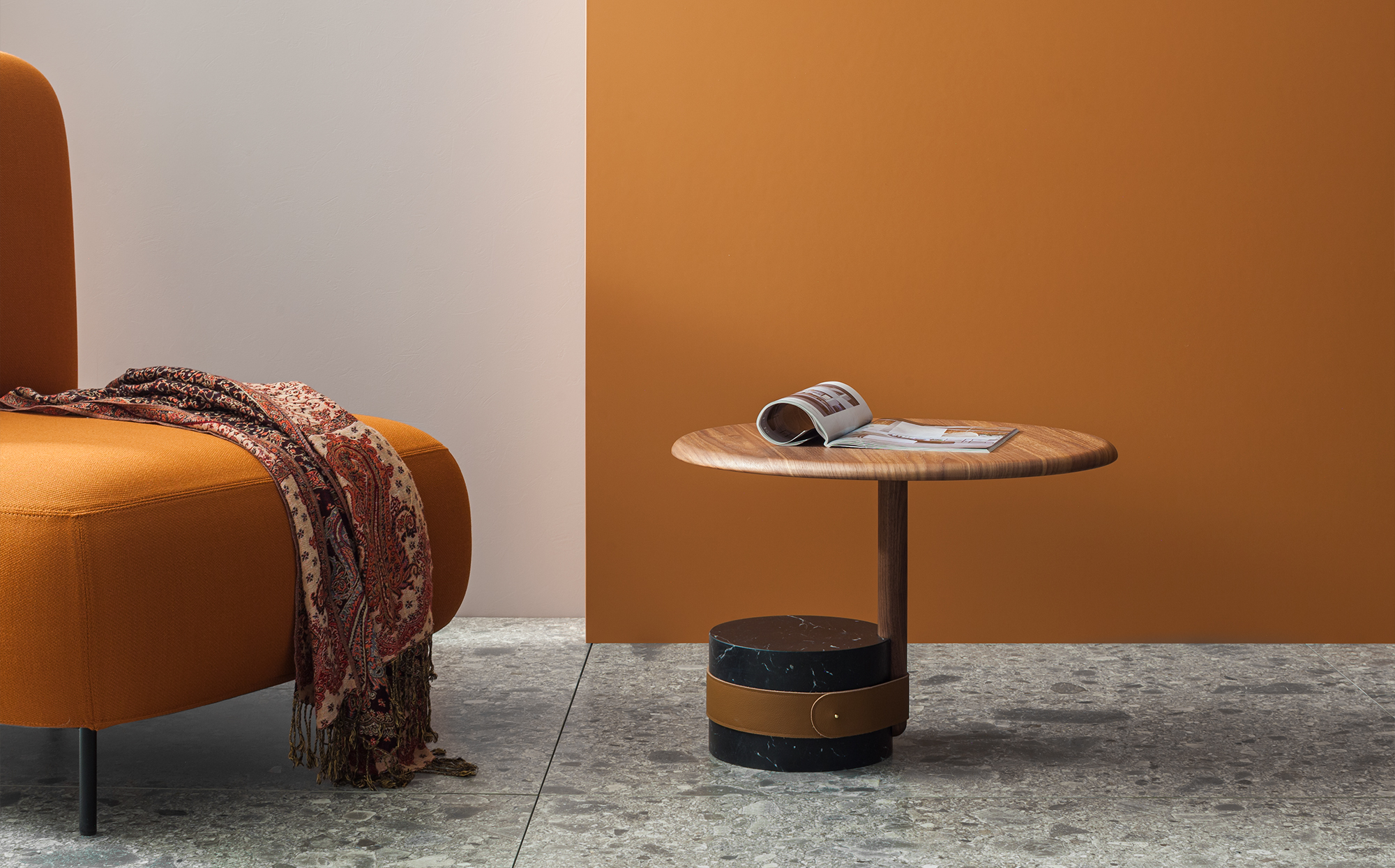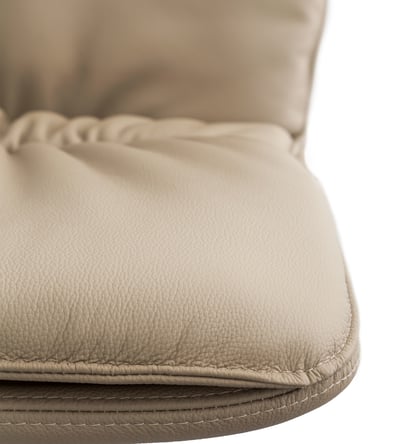How to choose your furniture colour
A mini-guide to choose colors, materials and combinations, not to be caught unprepared in the choice of the decor of your home.

Choosing the best material to furnish your home is not always that easy. In addition to aesthetics, the technical ...
How many times have you gone into a shop looking for advice, only to be provided with materials that are unsuitable for the room you are furnishing or, even worse, of poor quality?
We have created this mini guide to home furnishing materials for you, to help clear up the variety of materials and the countless options that are available on the market. Each particular case and each house always has its specific requirements but, by comparing the main specifications of the materials, you will always know which item to opt for.
Where is the house you want to furnish located? A seaside area will require different specifications compared to that of a mountain location, so the location of the building also has to be taken into account. What do we mean? If the house you are renovating or furnishing is located by the sea, for example, you need to choose materials that are resistant to salt and corrosion.
Apart from choices made purely for ethical reasons, the difference between leather, eco-leather and leatherette is often confusing. We certainly know that leather costs a great deal more than leatherette, but what are its characteristics?
Leather, particularly if it is a quality cut, is a very durable material. If treated with proper care, which is not at all difficult, it will retain its beauty for a many years.

Specific leather cleaning products are available on the market, but for superficial stains, cleansing milk or mild soap and water are all that is required to keep the leather looking as good as new.
On the other hand, faux leather, which is usually composed of a fibre covered in plastic, does not require any particular maintenance and can only be cleaned using water, being careful not to use any chemical substances or solvents that may damage it. Because of its characteristics, leatherette has an average life of approximately 5-6 years, depending on its composition and use.
However, do not confuse leatherette with eco-leather. Although the two terms are often confused and used synonymously, eco-leather refers to leather of animal origin that is tanned and processed using environmentally friendly techniques. It is therefore not suitable for those who choose to reject ‘real leather’ on ethical grounds.
If you are undecided about whether to choose leather or leatherette to furnish your home, consider the environment in which it is to be placed and how it is to be used. One example of this is the choice of sofa – faux leather is ill-suited to underfloor heating or continuous proximity to heat sources which, in the long run, irreparably damage the upholstery.
Deciding on a floor covering for the home is always a very difficult time, providing us with an almost infinite range of materials and possibilities. However, current trends are seeing two major players in the world of floor cladding – natural wood and porcelain stoneware. The choice of one or the other material depends primarily on the characteristics of your house and the area where the floor is to be laid.
Porcelain stoneware, like ceramics, has improved substantially in recent times, both in terms of technology and aesthetics, making it an excellent partner in renovations. Features, such as not absorbing liquids, being very resistant to impact and scratching and requiring little maintenance, have made it preferable over wood for the more humid and delicate types of environment, such bathrooms. If you opt for good-quality stoneware, the wood effect is reproduced so faithfully in the grain that it will be almost impossible to distinguish it from the real thing.
It goes without saying, however, that the tactile nature of real wood is unique and inimitable, as is the immediate sense of warmth it conveys. Another aspect to be taken into account is that real wood floor cladding never goes out of style, and can actually increase the value of your home. There is, of course, the practical side to consider – in addition to the significantly higher costs compared to stoneware, natural wood requires continual maintenance and stains easily if left untreated. It may also discolour or oxidise in the course of time when exposed to direct sunlight or external agents.
Another important factor lies in the choice of furniture material. Clearly, the choice of one material over another depends very much on budget and taste, but here we will have a look in detail at the differences between veneered, lacquered and laminated furniture.
The first option is the most valued, i.e. veneered furniture, which consists of a panel (usually made of MDF - a wood derivative) onto which a thin, real wood sheet is applied. It is one of the most valued and, therefore, the most expensive furnishing solutions, but it must also be said that this solution undoubtedly provides the greatest aesthetic impact, even in terms of durability and practicality. Veneered furniture should be treated just as if it were made entirely of wood – it should be dusted and maintained using special products and waxes to preserve its vividness. It is also important to avoid exposing it to direct sources of light to prevent colour changes or oxidation. By following these simple steps, a veneered item will be a durable furniture item.

Lacquered furniture refers to MDF panels that are lacquered on all sides, in matt or gloss finishes. The quality of the processing depends primarily on the thickness of the lacquer, which should be thick enough to ensure durability and vividness over time. The maintenance of a lacquered piece of furniture is ever so slightly more delicate than that of a veneered piece. Aggressive chemical substances that may react with the varnish should therefore be avoided during cleaning, and soft cloths and water should only be used. In terms of design, lacquered furniture is undoubtedly a choice of great value. The colour of the varnish provides originality and style to any home or environment, expressing to the full the personality of the person who makes the choice.
Lastly, let’s have a look at laminated furniture, which is a much cheaper choice than those mentioned above. But what is a laminate? This is a sheet of plastic and resins applied onto a chipboard panel. This is a cheaper material than the above-mentioned materials, but it still provides excellent performance in terms of resistance to direct light, it is water-repellent and easy to clean. Over time, laminate has also seen an evolution in its improvement, now providing good durability and strength, and faithfully reproducing a wood effect due to the wide range of colours and textures that are available.
When it comes to choosing between marble and synthetic stone, the decision is most often made on the basis of function and budget rather than aesthetics. Let’s look in detail at the main features to recall when choosing engineered stone or marble for your cladding.
Marble is a natural stone, a pure, crystalline metamorphic rock that contains mainly calcium carbonate and various minerals (clay, sand, fossils) that determine its texture and veining. Its main features are its hardness and strength, but care must be taken with acidic substances (such as lemon juice or vinegar), as these may irreparably stain or damage it. Marble is undoubtedly one of the most durable materials, capable of providing value to the home and immediate vividness to the room into which it is inserted. Choose marble cladding if you require furnishing with a style that is simply timeless, using a unique material of which two are never the same.
Artificial stone and stone-effect cladding, on the other hand, consist of a mixture of resins, clays and sand that reproduce the shapes and details of the natural material. The result is a item that is highly resistant to acids or staining, easy to clean and maintain, and excellent value for money. They therefore guarantee an end effect that is almost identical to that of natural stone, at a much lower cost. The choice in this case is linked to usage, budget and aesthetics.
With this brief overview of the best materials for your furniture, you are now armed with the tools to make the best choice for your home. The choice is yours!
A mini-guide to choose colors, materials and combinations, not to be caught unprepared in the choice of the decor of your home.
The choice of sustainable materials is a fundamental integral part in the manufacturing processes of Morica products. In addition to the attention...
Environmental awareness is increasingly becoming a way of life, as is choosing to furnish homes in environmentally friendly ways. Focus on materials...